Anneka Rice: Strictly star reflects on Challenge Anneka's impact
- Published
- comments

Anneka Rice partners reigning champion Kevin Clifton in the 17th series of Strictly Come Dancing
Anneka Rice is back on our TV screens as one of the contestants in the new series of Strictly Come Dancing - 30 years after the first episode of Challenge Anneka was broadcast.
The programme, which left a physical legacy that few TV shows can match during its six-year run, saw Rice persuading volunteers and businesses to help her complete a community project in only a few days.
Up and down the country, and even overseas, many of these are still in use, including a theatre in Gloucester, a boathouse in Devon and a nursery in Leeds.
"The affection for it is epic," the TV presenter says. "It is overwhelming on a daily basis. So many people were touched by the series - people's lives were literally changed. It's been my life's work, really. I've never left it because I am still very involved with so many projects."
The show, which regularly achieved viewing figures of about 11 million, was created for Rice, who had already achieved fame on Channel 4's Treasure Hunt.
In that programme she would be permanently on the move, solving problems against the clock, bringing an energy and an assortment of jumpsuits that would also be a feature of Challenge Anneka.
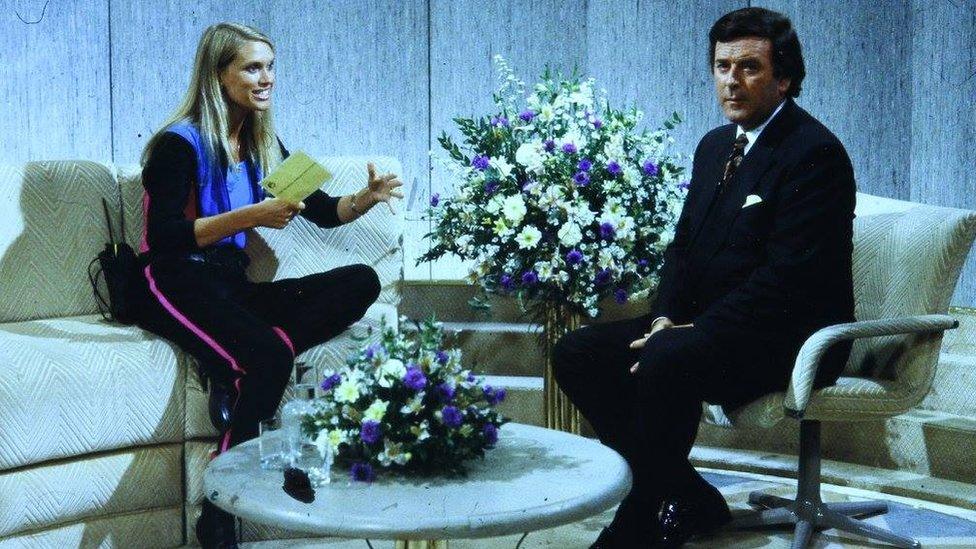
The first challenge was revealed live on Wogan
However, BBC bosses were unsure the new concept would work.
"The first series, it was a whole new format," 60-year-old Rice says. "It was on a Friday night and it was very much an experimental series without that much ambition to the projects because we didn't quite know how the public would react. And then of course we realised that actually we could do anything because the public is so behind it. So the second series just went 'pow' - into a new level."
In that series, projects included building a jetty for a remote island, converting a chapel into a homeless shelter and renovating a dilapidated orphanage in Romania. They would usually be given a few days to complete the job.
"It was an arbitrary amount of time and we would normally not finish on time. But we would always stay behind to make sure it was finished," she says.
"There was no entourage of makeup and wardrobe and health and safety. I was just there with the workers so we built up really strong bonds. The whole Challenge team say they have never worked on anything since that has affected them so profoundly."
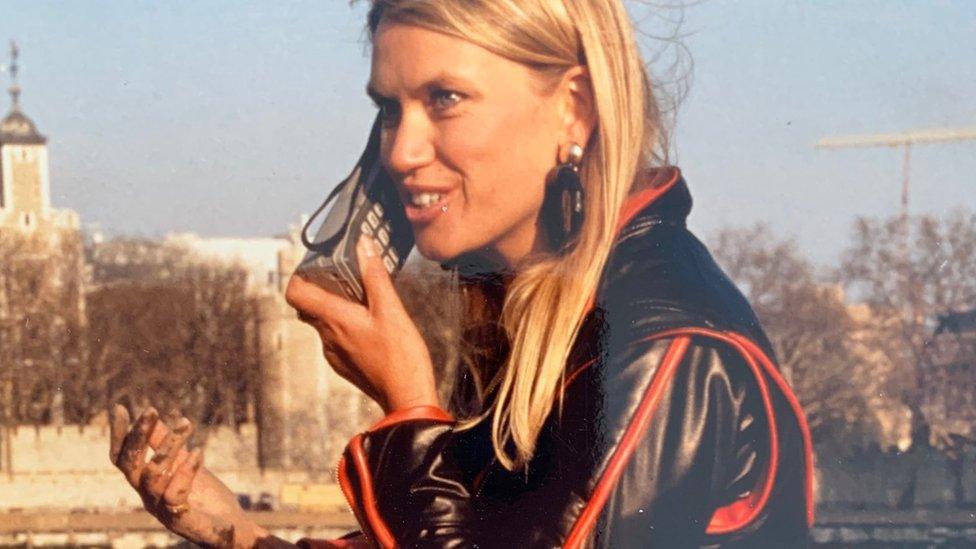
There were more than 60 episodes of Challenge Anneka
The crew would frequently go overseas, often to challenging locations.
"We did a project in Croatia... and were working in a town called Pakrac and there were literally Serb snipers in the hills with their guns focused on us, and we had to have protection from the United Nations," Rice says. "We all wrote letters home to our loved ones and left them in the hotel in case something happened."
The projects were often ambitious in scale, and occasionally not everything would go to plan. In one show they were advised to use the wrong type of white stone chippings, external to renovate a 19th Century white horse carved into a hillside in Dorset. It was washed away in bad weather.
You might also be interested in:
Rice, who partners reigning champion Kevin Clifton in the 17th series of Strictly Come Dancing, says she can still feel the effects of her time on Challenge Anneka almost a quarter of a century after the last show was made.
"I'm paying even now training for Strictly because I have bad back problems as a result of the heavy lifting and digging we were doing [on Challenge Anneka]," she says.
"I was more or less a builder for six years."
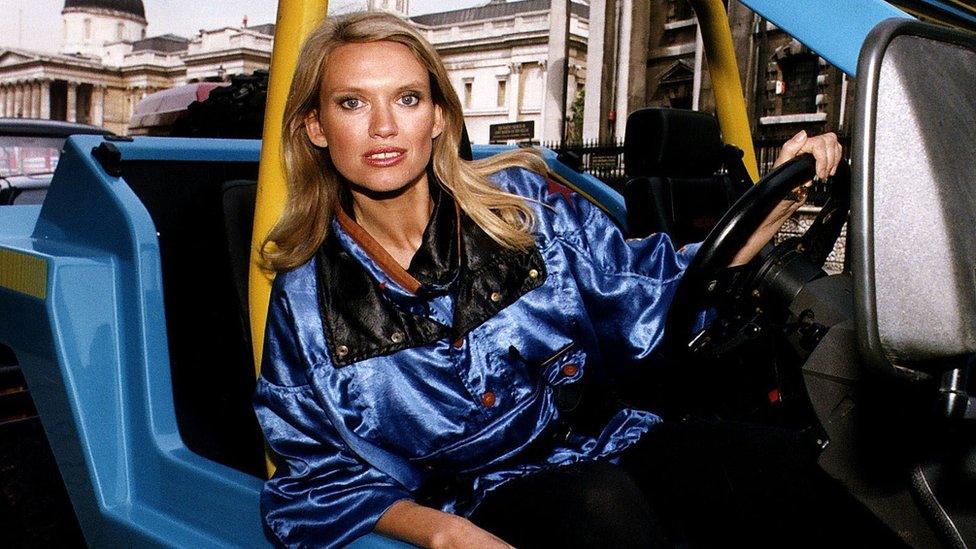
Anneka Rice, pictured here in the blue buggy she used in the show, says she is still involved with many of the projects

Wadebridge footbridge, Cornwall
The challenge: Build a 180ft (55m) footbridge over the River Camel in three days.
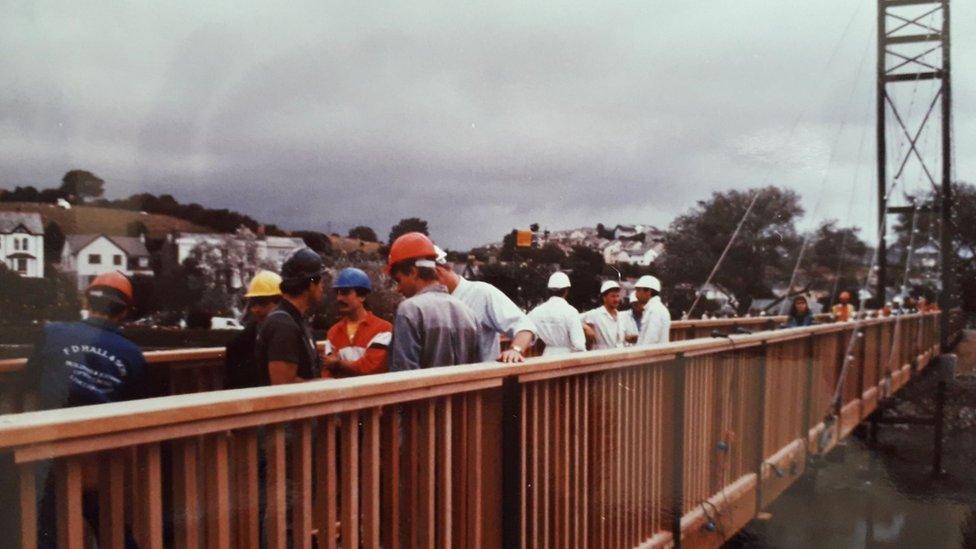
"Wadebridge was fantastic because you could really see the need for it, in that if you lived on one side of the bank you couldn't get to the other side without going on a massive detour and going over a very busy road bridge," Rice says.
"It joined the two communities up. If you want to watch one of the programmes, that one is particularly joyful. It really sums up the magnitude of the huge project but also the fun we had as a crew. We asked the construction people how long the project would take and they said six months, and we said 'OK, we'll do it in six days'.
"We built a bloody suspension bridge!"
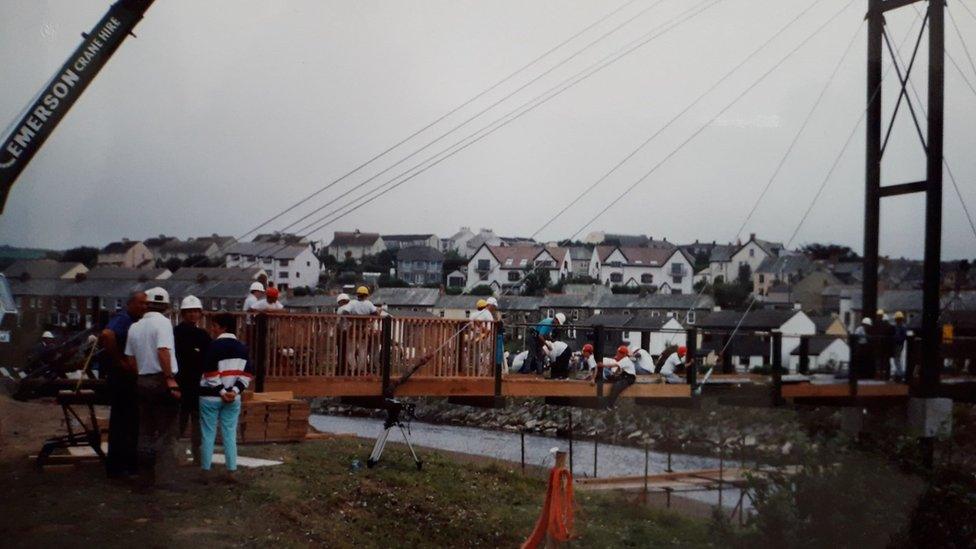
Diane Dingle had written to the BBC after seeing an appeal for new challenges.
"Everybody calls it Anneka's bridge now," she says. "It is so well used and I feel so pleased that what we did was so worthwhile - it has been endlessly beneficial to the town.
"I don't think they realised how big the challenge was - or how wide the river is. We had so many local people who helped and many of them worked through the night. Even though some of them have gone now, it really gave us all something so special to get behind."

Rice and her sound man Dave Chapman returned to Wadebridge for a 25th anniversary celebration in 2016
Romanian orphanage
The challenge: Renovate a dilapidated state-run orphanage that was home to about 700 children living in appalling conditions.
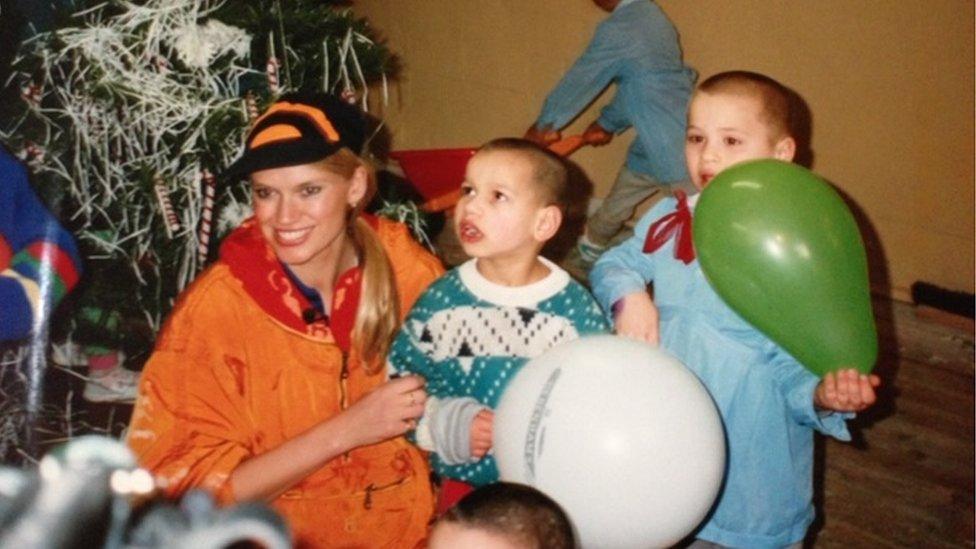
"Every single person I seem to meet remembers the Romania challenge," Rice says.
"I had people queuing on my doorstep wanting to adopt children. It exemplified the utter point of the format of the programme. The harnessing of the power of television to do something good and create a legacy - that is Romania.
"It was so shocking what we saw. It was suffering on such a terrible scale. The children were not just physically malnourished, most of them had Aids. They were tethered three or four to a cot. You couldn't tell how old any child was because they were bald, they had scabies, they were just sickly little children sitting in their own waste without nappies, in the dark as there was no electricity.
"We were donated planes, medical supplies, bedding - everything under the sun. The telephone lines crashed because there were so many people that inundated them. We had depots all over Britain and people would turn up with building materials and blankets and toys, and children would donate their bicycles."

The orphanage is now in ruins but 80 of the inhabitants are still supported by the Romanian Challenge Appeal, set up by Monica McDaid
Monica McDaid was a school teacher who wrote the letter that started the challenge. She offered to stay behind and is still in Siret 29 years later, having set up seven houses where 80 of the original orphans live.
"Anneka was an inspiration and catalyst, enabling many volunteers to travel to Romania in order to help improve and change the lives of young people abandoned to a life of suffering, loneliness and hunger, and who were completely stripped of self-worth and dignity," she says. "She brought love, comfort, a feeling of trust and gave the children hope for a better future.
"Her dedication has continued with further visits to the orphanage and taking a personal interest in the development of so many of their lives. The legacy of the programme has been to encourage volunteers to go to Siret and continue the work, giving the young people a voice and a feeling of self-worth."
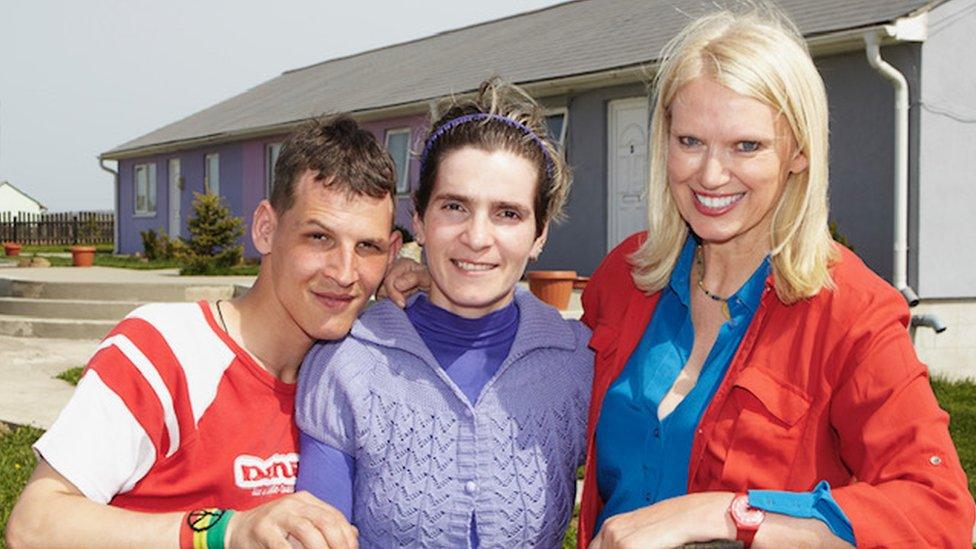
Viorel and Mariana, who met in the orphanage, are now married
Wormwood Scrubs Pony Centre, west London
The challenge: Create an indoor riding school for disabled children.

Prisoners helped Rice create the indoor riding school
"At one point I drove the buggy into Wormwood Scrubs prison and asked the governor if I could borrow a few prisoners," Rice says.
"And I'm driving back with the prisoners in the back of the buggy with Dave the sound man and I go 'what are you in for?' and the guy goes 'murder', and I go 'oh, great!'. And they helped with the build."
Sister Mary-Joy Langdon is the nun who founded the pony centre.
"It was absolutely amazing," she says. "The buzz and the energy of everyone was incredible. I remember watching the JCBs working all night under halogen lights - it was like a magical dance. I'll never forget it. You think programmes like this are set up but this wasn't at all - they were still laying tarmac as people were walking in.
"After the madness of the 72 hours I sat there and took it all in. And I asked one of the children, who was totally blind, if he wanted to have a ride. Watching him go around that safe and secure indoor space on his own was very special. Thousands of kids have been through this centre and have had their lives changed, and we are more popular than ever."

Sister Mary-Joy Langdon founded the Wormwood Scrubs Pony Centre charity in 1989
Bryher quay, Isles of Scilly
The challenge: Build a new quay for the island of Bryher that was accessible at low tide.
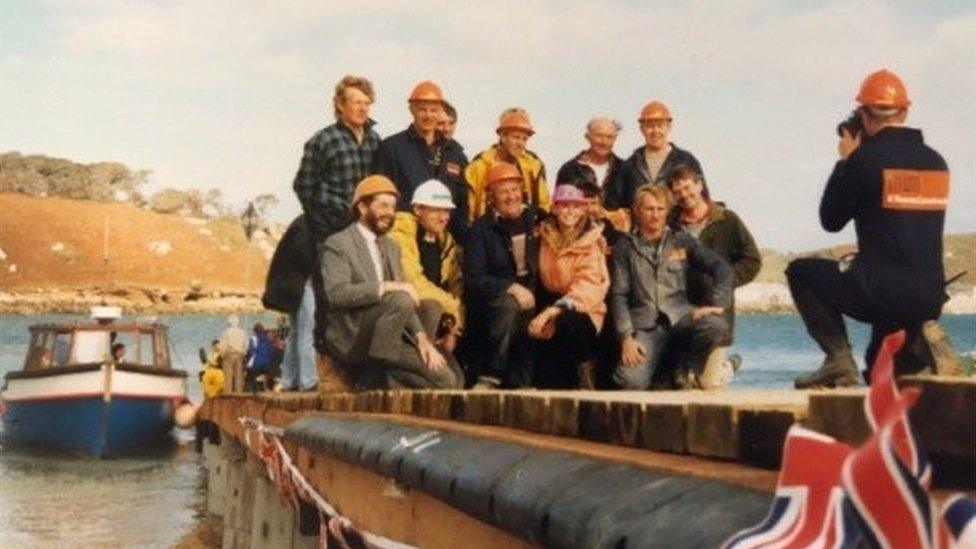
People say the quay had a profound affect on Bryher
"We didn't finish on time because there were Force 8 gales but it was a wonderful project," Rice says.
"I love visiting now and feel so proud when I step out on to that quay. My son Thomas was about one when I took him on that first project, so it was very special."
Islander Issy Tibbs, who was 10 at the time, remembers it well. "It has had a profound affect on Bryher," she says. "When we were little my mum would rarely take us off the island as it was too difficult getting young children down a ladder on to a beach. Now my pre-schooler is about to start on St Mary's (a different island) five days a week.
"People live on Bryher and commute to other islands for work. That would never have happened 30 years ago. Forty years ago a report said Bryher was likely to become depopulated and now it is thriving and the jetty is a large part of that."

The jetty enables boats to access Bryher when the tide is low
- Published8 September 2019

- Published7 September 2019

- Published9 September 2019
